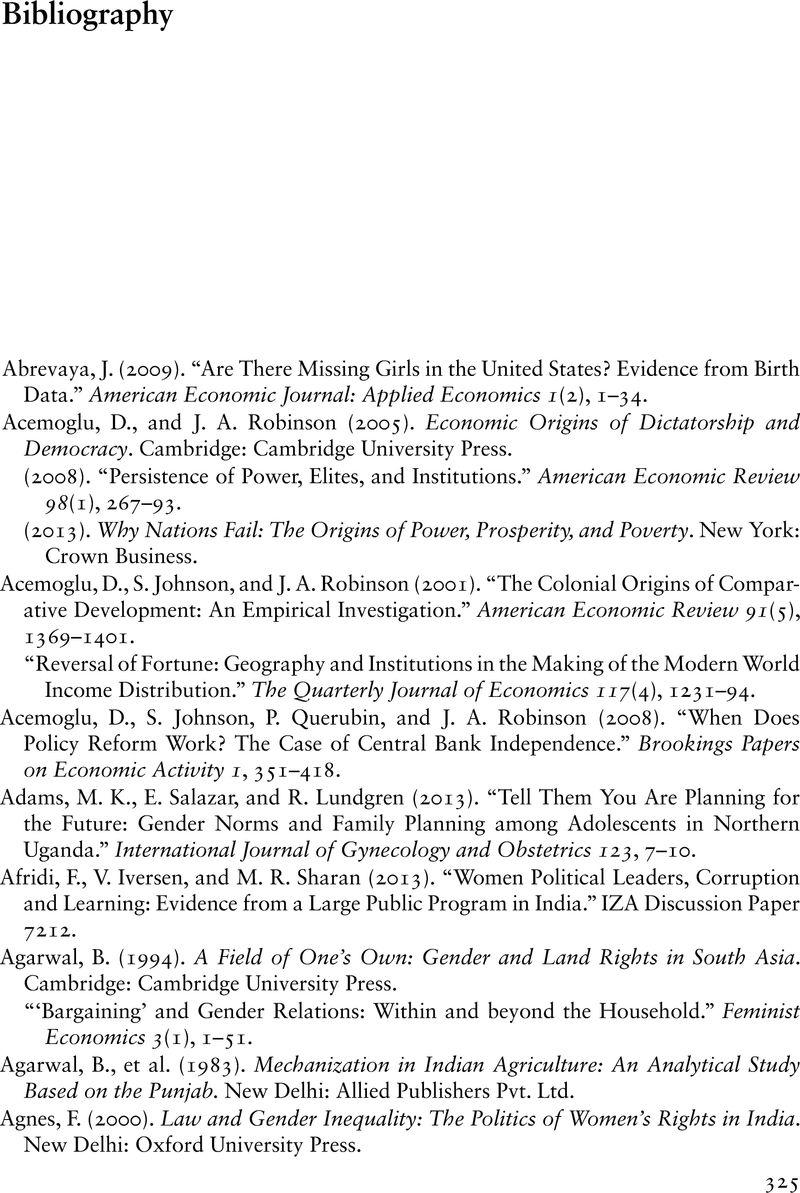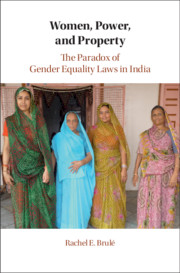Book contents
- Frontmatter
- Dedication
- Contents
- List of Figures
- List of Tables
- Acknowledgements
- 1 Introduction
- 2 A Theory of Political Representation and Economic Agency
- 3 Property and Power: A Political History of the Hindu Joint Family
- 4 Where Are the Women? Investigating Reform’s Roots
- 5 The Politics of Property Rights Enforcement
- 6 The Long Arm of Resistance: Refusal to Care for Parents
- 7 Representation and Violence: Gender Equality and Sex Selection
- 8 Conclusion
- 9 Data Appendix
- Bibliography
- Index
- References
Bibliography
Published online by Cambridge University Press: 16 October 2020
- Frontmatter
- Dedication
- Contents
- List of Figures
- List of Tables
- Acknowledgements
- 1 Introduction
- 2 A Theory of Political Representation and Economic Agency
- 3 Property and Power: A Political History of the Hindu Joint Family
- 4 Where Are the Women? Investigating Reform’s Roots
- 5 The Politics of Property Rights Enforcement
- 6 The Long Arm of Resistance: Refusal to Care for Parents
- 7 Representation and Violence: Gender Equality and Sex Selection
- 8 Conclusion
- 9 Data Appendix
- Bibliography
- Index
- References
Summary

- Type
- Chapter
- Information
- Women, Power, and PropertyThe Paradox of Gender Equality Laws in India, pp. 325 - 362Publisher: Cambridge University PressPrint publication year: 2020



